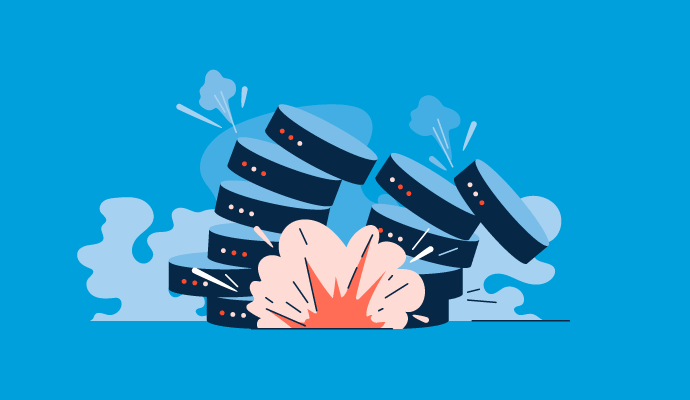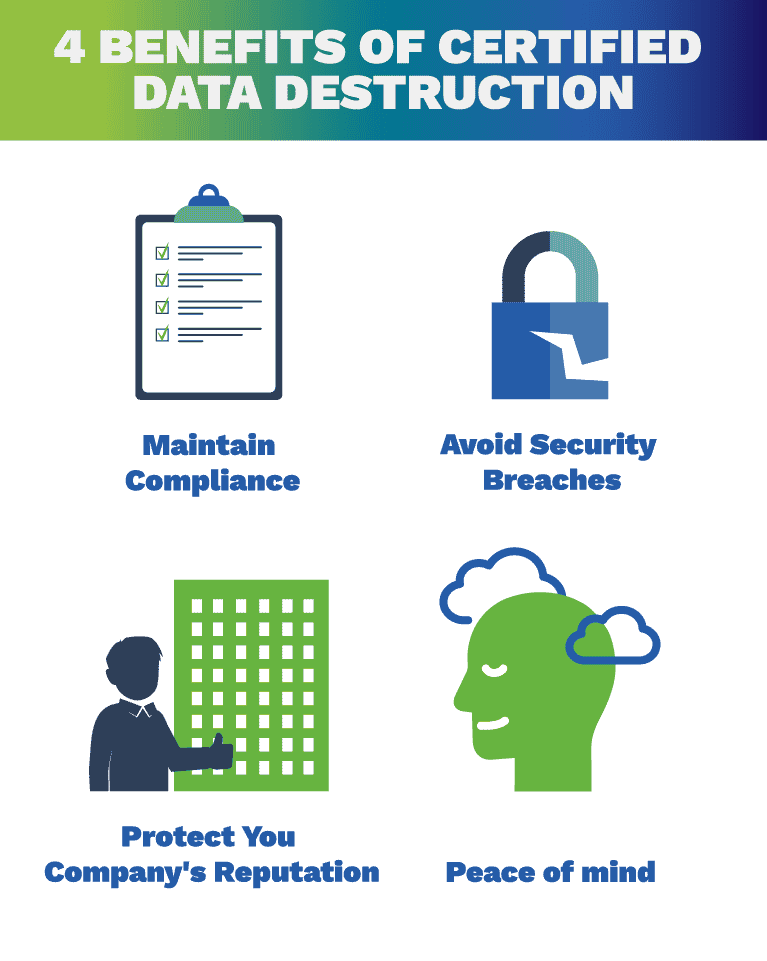The Crucial Nature of Information Destruction in Upholding Computer System Safety And Security Solutions and Protecting Against Unauthorized Access
In a period where information violations and identification burglary are significantly widespread, the relevance of effective data destruction can not be overstated. Numerous techniques, from information cleaning to physical damage, offer as crucial safeguards versus unauthorized accessibility.
Relevance of Data Destruction
In a significantly digital globe, the significance of information damage can not be overstated. As organizations generate substantial amounts of delicate info, the potential repercussions of falling short to correctly get rid of and manage of that information come to be increasingly extreme. Information violations, identity burglary, and company espionage position significant dangers, emphasizing the necessity of effective data damage techniques.

Furthermore, as innovation advances, so as well do the techniques whereby destructive stars seek to exploit sensitive info. Organizations should remain watchful and proactive in their information damage methods to protect versus these progressing dangers. By prioritizing data damage, firms not only secure their assets but also foster depend on amongst stakeholders and clients, showing a dedication to liable information administration and safety methods.
Approaches of Effective Data Damage
To make sure the permanent and complete damage of sensitive information, companies can use a variety of reliable methods customized to their certain needs. Among the most typical approaches is information cleaning, which includes utilizing specialized software to overwrite existing information several times, making recovery basically difficult. This is specifically valuable for solid-state drives and tough drives, where typical removal techniques are poor.
An additional efficient technique is degaussing, which utilizes strong magnetic areas to interrupt the magnetic domain names on storage media, providing the information irretrievable. This approach is specifically suited for magnetic storage space devices, such as disk drive and difficult disks.
Physical destruction is also a feasible choice, involving the shredding, crushing, or incineration of storage devices. This method assurances that data can not be recouped, making it excellent for companies dealing with extremely sensitive information.

Conformity With Information Defense Rules
Organizations must not only focus on reliable information destruction methods but additionally guarantee conformity with information protection regulations that control just how delicate info is managed and dealt with. Following these policies is essential for maintaining and protecting personal data customer trust fund. Rules such as the General Information Protection Policy (GDPR) in the European Union and the Health Insurance Transportability and Responsibility Act (HIPAA) in the USA enforce strict standards on information monitoring, that include needs for the safe and secure disposal of delicate information.
To attain compliance, organizations have to carry out thorough information devastation policies that align with these legal structures. This includes determining information that calls for damage, establishing protocols for safe and secure methodsâEUR" such as shredding physical media or using software application that meets market requirements for data wipingâEUR" and maintaining thorough records of damage tasks. Routine audits must be carried out to ensure adherence to these policies and to recognize any potential locations for renovation.
Failure to follow data defense policies can bring about considerable lawful implications, consisting of hefty penalties and damage to an organization's online reputation. Therefore, integrating conformity right into data damage techniques is not only a legal obligation yet likewise an essential component of a durable info protection technique.
Repercussions of Poor Data Handling
Poor data handling can cause extreme repercussions that prolong beyond instant functional obstacles. Organizations might face significant economic losses because of information breaches, which frequently result in expensive remediation efforts, lawful charges, and regulatory fines. These monetary effects can prevent and strain resources growth, eventually impacting a company's profits.
Furthermore, inadequate data handling can severely damage an organization's online reputation. Stakeholders, partners, and customers may lose count on an entity that fails to safeguard sensitive info, bring about decreased consumer commitment and prospective loss of company chances. This erosion of depend on can take years to rebuild, if it can be restored whatsoever.
Additionally, companies could encounter lawful ramifications developing from non-compliance with information defense regulations. Such violations may cause investigations and penalties, intensifying the economic concern and additional tainting the company's image.
In the world of cybersecurity, inadequate information administration methods can develop susceptabilities that make systems much more susceptible to unauthorized gain access to and cyberattacks. Ultimately, these effects underscore the crucial value of applying durable data taking care of treatments to protect sensitive info and keep business honesty.
Finest Practices for Secure Information Disposal


First of all, information ought to be identified according to its level of sensitivity. Delicate details needs extra extensive disposal techniques, such as shredding physical documents and utilizing advanced software application for digital data wiping. Employing certified advice information devastation services ensures compliance with industry guidelines and requirements.
Second of all, companies should implement a data disposal policy that mandates routine audits. This plan needs to outline the treatments for data retention and devastation, guaranteeing that out-of-date information is dealt with without delay and securely. Training workers on these protocols is vital to promoting a society of safety awareness.
Finally, keeping thorough records of disposed data improves liability and offers a clear audit trail. This documents ought to include the kind of information ruined, the method used, and the day of disposal.
Verdict
Embracing robust approaches such as information wiping, degaussing, and physical devastation, along with compliance with policies like GDPR and HIPAA, is essential for protecting delicate details. Ignoring proper information disposal techniques can lead to extreme consequences, consisting of data breaches and legal consequences.
In a period where information breaches and identity theft are significantly prevalent, the relevance of effective information devastation can not be overemphasized. data destruction. Data breaches, identification burglary, and corporate reconnaissance present substantial risks, underscoring the need of reliable information destruction methods
Conformity with guidelines such as GDPR and HIPAA mandates that companies his response execute rigorous information protection actions, including the safe destruction of data at the end of its lifecycle.
By prioritizing data damage, business not just shield their possessions yet also foster trust fund among clients and stakeholders, demonstrating a dedication to liable information monitoring and safety practices.
Organizations must not only focus on reliable data damage methods however additionally ensure compliance with information protection laws that regulate how sensitive info Resources is managed and disposed of.